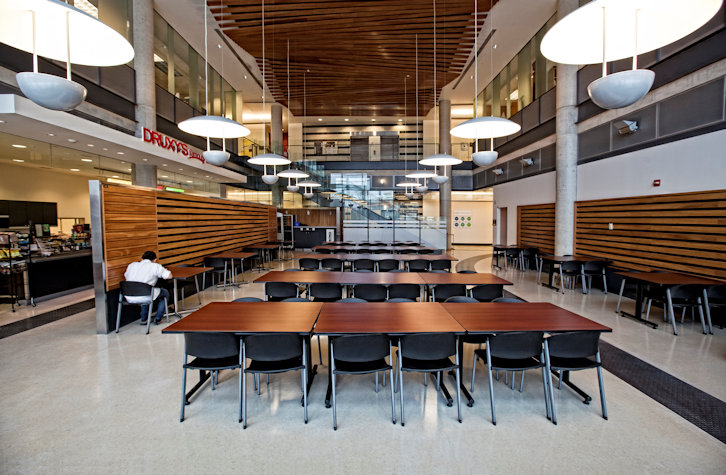About

The CNIB Foundation is committed to advocating for universal environments for people impacted by blindness. Equal rights for all Canadians regardless of disability are enshrined in the Canadian Charter of Rights and Freedoms and echoed in the UN Charter on the Rights of Persons with Disabilities. Governments, both in Canada and around the world, are passing groundbreaking disability rights legislation. Additionally, we are reaching new levels of societal awareness. We believe that public services and spaces that aren’t accessible to people with disabilities cannot accurately be described as “public.”
Architectural design should incorporate elements that facilitate the safe use of a space or independent travel. There are many uncomplicated, inexpensive solutions that consider people impacted by blindness and their needs, and which in fact benefit all users. These solutions can not only make a space universally accessible, but can also enhance it aesthetically, since buildings that apply universal design principles can also be beautiful. Implementing these solutions mainly requires the application of simple techniques to make information about an environment available in an accessible way. To read more about the seven principles behind universal design, please visit the University of North Carolina’s Center for Universal Design.
The design recommendations presented in this resource focus primarily on the needs of people impacted by blindness, including those who are Deafblind. While some technical requirements also address various design needs of people with other disabilities, it’s important to note that “Clearing Our Path” is not intended as a resource to comprehensively address the accessibility needs of all people with disabilities.
It’s also important to note that individual provinces and municipalities may have legislation or bylaws which address some of the same technical requirements presented within this resource. Where such legislation exists, architects and other designers are encouraged to choose the design requirements that maximize accessibility for people impacted by blindness, but never less than the legislated requirements of the local authorities.